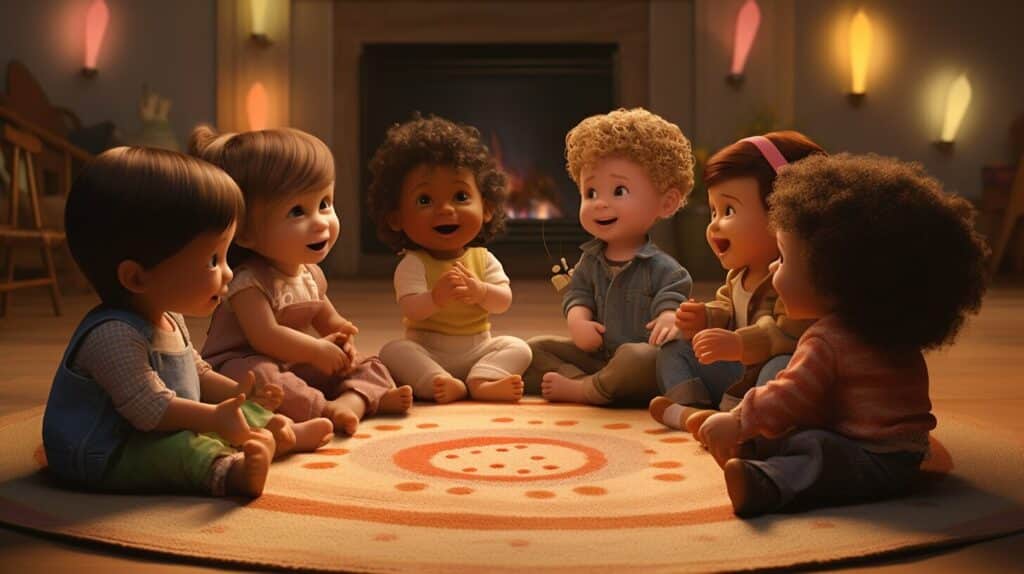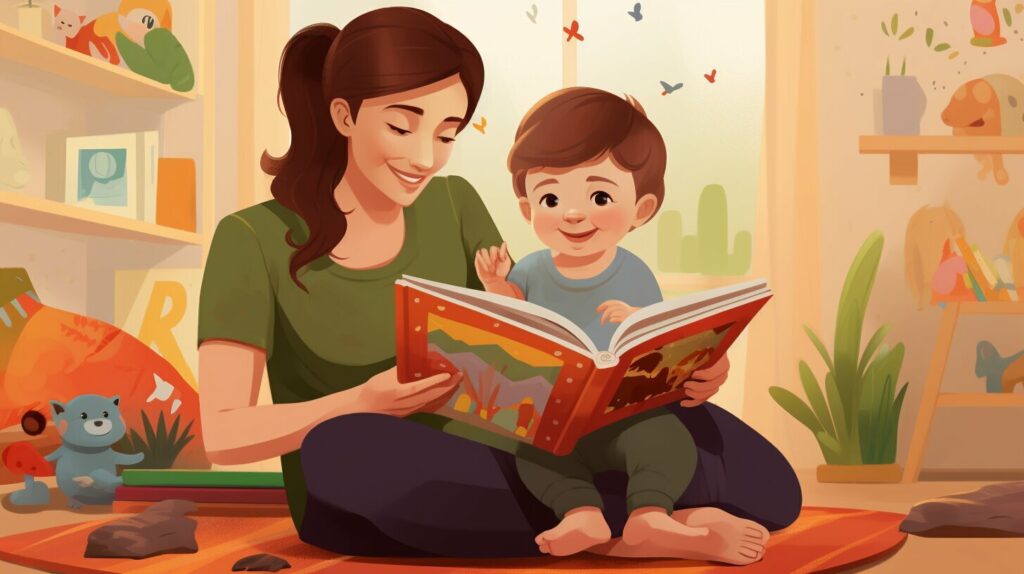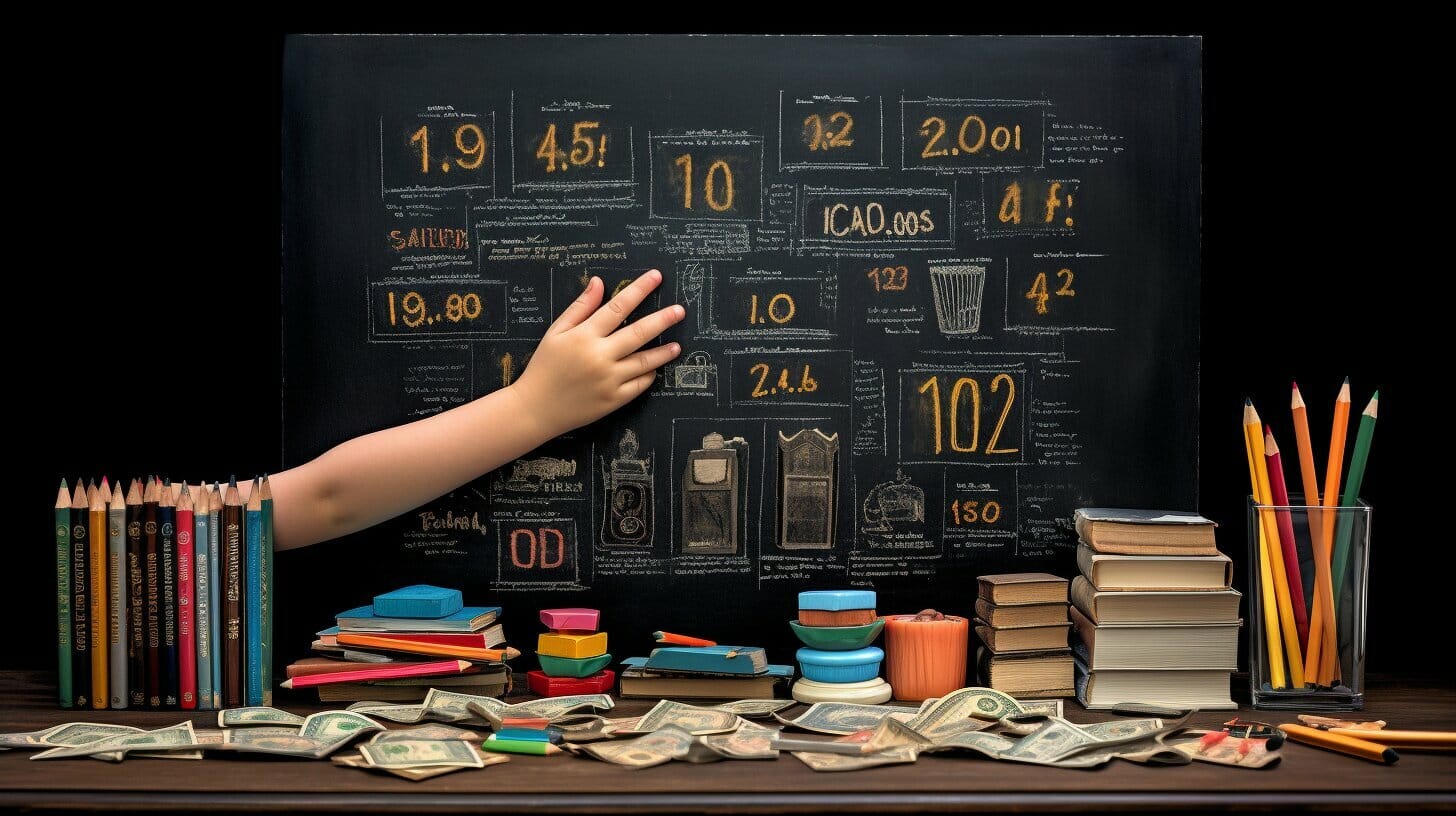As a parent, helping your young child understand complex emotions such as love can be a daunting task. However, by taking the time to explain love in age-appropriate ways, you can give your child a solid emotional foundation for the future. In this parenting guide, we will explore effective strategies on how to explain the concept of love to a toddler to foster empathy and compassion in your little one.
With limited cognitive abilities, toddlers may struggle to comprehend the abstract concept of love. Therefore, it is crucial to simplify and break down the complex emotion into simple and relatable terms that toddlers can understand. But why is it important to discuss love with young children? Let’s find out.
Key Takeaways:
- Explaining love to a toddler is crucial for healthy emotional development and positive relationships.
- Simplifying love for toddlers is essential due to their limited cognitive abilities.
- Using everyday examples and storytelling can help toddlers understand love better.
- Expressing love through actions is just as important as using words.
- Nurturing empathy and kindness is closely linked to understanding and expressing love.

Why is it Important to Discuss Love with Toddlers?
As parents, we want our children to grow up to be empathetic, compassionate, and capable of building positive relationships with others. By discussing love with toddlers, we can lay the foundation for healthy emotional development and promote positive relationships in their lives.
Understanding a Toddler’s Comprehension of Love
Before we dive into how to explain love to a toddler, it’s essential to understand how they comprehend this emotion. Toddlers have limited cognitive abilities and cannot grasp abstract concepts easily. They primarily understand love through the actions and behaviors of their caregivers towards them.
Through cuddling, hugging, kissing, and other forms of physical affection, toddlers start to build an understanding of love. They also learn to recognize love through tone of voice and facial expressions.
However, it’s also essential to note that toddlers aren’t capable of understanding complex emotions like adults. They may use the word “love” without fully comprehending its meaning. That’s why it’s crucial to simplify the concept of love for them and use relatable examples.
Next, we’ll explore how to simplify the concept of love and break it down into simple and relatable terms that toddlers can grasp.
Simplifying Love for Toddlers
Explaining love to toddlers can be challenging since they are still developing their cognitive abilities. Therefore, parents must simplify the concept of love for them. Below are some suggestions on how to break down this complex emotion into simple and relatable terms that toddlers can grasp:
Use Simple Words
When explaining love to toddlers, it’s essential to use words they understand. Words like “hugs,” “kisses,” and “cuddles” are simple and effective ways to introduce the concept of love.
Use Gestures
Physical gestures are great tools to help toddlers understand love. For example, hugging and kissing your toddler can help them associate those gestures with love and affection.
Use Visual Aids
Visual aids are helpful for toddlers to understand abstract concepts such as love. You can use pictures and videos to show examples of love, like a mother cuddling her baby or a father playing with his child.
Explain the Feeling
Another way to simplify love for toddlers is to explain the feeling behind it. For example, you can say, “When mommy hugs you, it’s because she loves you very much and wants you to feel happy and safe.”

By using simple words, gestures, visual aids, and explaining the feeling behind it, parents can help toddlers understand and appreciate the power of love. Remember that every child is different, and what works for one may not work for another. It’s essential to be patient, consistent, and use different strategies until you find the one that works for your child.
Using Everyday Examples to Explain Love
Explaining love to young children can be challenging, but using everyday examples can help them understand this complex emotion better. Here are some practical tips for talking about love with a toddler:
- Use examples from your daily routine: During meal times, explain how you cook their favorite meal because you love them. When you tuck them in at night, tell them how much you love them and how happy you are to be their parent.
- Point out acts of love: When you see someone helping an elderly person cross the street or holding the door open for someone, point out that it’s an act of love and kindness.
- Talk about love in nature: Explain how flowers bloom and trees grow because they receive love and care from the sun, soil, and rain. This helps children understand the concept of nurturing and love.

Using everyday examples to explain love helps toddlers relate to the concept in a way that makes sense to them. By doing so, you can help them develop a deeper understanding of love and its importance in their lives.
Reading Books About Love
Storytelling is a powerful way to introduce young children to the concept of love. By reading books about love to toddlers, parents can instill the importance of this valuable emotion in a fun and engaging way.
Here are some age-appropriate books that parents can read to their toddlers:
| Book Title | Author | Age Range |
|---|---|---|
| The I Love You Book | Todd Parr | 0-3 years old |
| Love You Forever | Robert Munsch | 2-5 years old |
| The Pout-Pout Fish | Deborah Diesen | 3-6 years old |
When reading these books with toddlers, parents can use them as a starting point for a love conversation. Ask questions, such as “What does love mean to you?” or “Who do you love?” This can open up a dialogue about the topic and help toddlers better understand the concept of love.

Expressing Love Through Actions
While words are essential, it’s vital to express love through actions as well. Toddlers are still developing language skills and might have a difficult time understanding what love means, but they can feel it through actions.
Actions that show love can vary from family to family, but here are a few ideas:
| Action | Explanation |
|---|---|
| Hugging | Hugging is a simple yet powerful way to express love to a toddler. |
| Playing Together | Children love to play, and spending time playing with them is a great way to show love. |
| Being Present | Spending time with a toddler and being present in the moment conveys love and care. |
| Listening | Toddlers love to share their thoughts and feelings, and listening attentively shows them that they are valued and loved. |
Remember, actions speak louder than words. By incorporating simple actions that show love into daily routines, toddlers can feel and understand the concept of love better.
However, expressing love through actions must be done in a way that is appropriate for the age and development of the child. For example, hugging a toddler tightly can overwhelm them and make them feel uncomfortable. In contrast, gentle hugs and cuddles are more appropriate for young children.
As a parent or caregiver, it’s important to observe a toddler’s reactions and respond with actions that make them feel loved and secure.
“A toddler needs love the most when they seem to deserve it the least.”
Remember, expressing love through actions is not only about making toddlers feel loved but also helps build a strong bond between parent and child. It sets the foundation for healthy relationships and emotional development in the future.

Nurturing Empathy and Kindness
Developing empathy and kindness is essential in teaching love to a toddler. Empathy is the ability to understand and share the feelings of others. It allows toddlers to put themselves in someone else’s shoes and respond with kindness and compassion.
One way to establish empathy is by asking toddlers how they would feel in certain situations. For example, you can say, “How would you feel if you lost your favorite toy?” This helps them understand how others might feel in similar situations and creates a space for empathy to grow.
Another way to encourage empathy and kindness is by modeling it yourself. Children often learn by observing and imitating adults around them. When you show kindness and empathy towards others, your toddler is more likely to do the same.
It’s also important to encourage your child to be kind to others, even in simple ways, such as sharing toys or saying kind words. You can use positive reinforcement to encourage good behavior and redirect negative behavior when necessary.
Furthermore, reading books about kindness and empathy can be an effective way to teach these qualities and broaden your child’s understanding of love. Books like “The Giving Tree” by Shel Silverstein and “The Kindness Book” by Todd Parr can help toddlers understand the importance of treating others with kindness.

In conclusion, nurturing empathy and kindness is crucial in teaching love to a toddler. By encouraging empathy through questioning, modeling, and positive reinforcement, toddlers can learn to understand and express love towards others. Reading books about kindness and empathy can also be an effective way to reinforce these qualities in young children.
Embracing Unconditional Love
Parental love is often described as unconditional- a love that is given freely without any strings attached. For toddlers, this concept can be difficult to grasp. However, by practicing unconditional love in our interactions with them, we can help them understand this powerful emotion.
One way to embrace unconditional love is by offering praise and positive reinforcement when our toddlers do something good. Praising their effort rather than the outcome can help them feel loved and valued, regardless of the result. Additionally, we can avoid harsh criticism or punishment for mistakes and instead offer guidance and support. This approach can help toddlers understand that they are loved no matter what, and that their parents will always be there to help and guide them.
“Unconditional love is like a muscle. The more it is exercised, the stronger it becomes.” -Unknown
Another way to cultivate unconditional love is by spending quality time with our toddlers. By setting aside time to do activities they enjoy, we can show them that they are important to us and we love them just the way they are. It is crucial to listen actively when they speak and make eye contact to show them that we care about what they say. These simple actions can go a long way in communicating our love for them.
Finally, it is essential to remember that unconditional love is not just about words but actions as well. We must practice what we preach and model this type of love in our daily lives. Even when we are frustrated or upset, we must find ways to express our love and affection towards our toddlers. When they see us living this way, they will be more likely to understand and embrace this concept of unconditional love themselves.

By embracing unconditional love, we can help our toddlers feel secure, loved, and valued, which can positively impact their emotional development. As we practice this type of love in our interactions with them, we can help them understand that love is not something that is earned, but rather a gift that is freely given.
Conclusion
Teaching toddlers about love may seem like a daunting task, but it’s an essential part of their emotional development. By discussing love with young children, we can lay the foundation for healthy relationships and promote empathy and kindness in their lives.
Remember to simplify the concept of love for toddlers and use everyday examples to help them understand it better. Reading books about love and expressing love through actions are also effective strategies to enhance their comprehension of this powerful emotion.
Nurturing empathy and kindness and embracing unconditional love are crucial aspects of teaching toddlers about love. By incorporating these strategies into our parenting practices, we can help our little ones comprehend and appreciate the power of love from an early age.

FAQ
Why is it important to discuss love with toddlers?
Discussing love with toddlers is important because it lays the foundation for healthy emotional development and promotes positive relationships in their lives.
How can we simplify the concept of love for toddlers?
To simplify the concept of love for toddlers, we can break it down into simple and relatable terms that they can understand.
How can we use everyday examples to explain love to toddlers?
Using everyday examples that toddlers can relate to helps them understand love better. We can incorporate love into their daily experiences and conversations.
Are there any recommended books for teaching toddlers about love?
Yes, there are age-appropriate books that parents can read to their toddlers to introduce the concept of love in a fun and engaging way.
Why is it important to express love through actions?
Words alone may not be enough for toddlers to fully comprehend love, so it’s important to express love through actions as well.
How can we nurture empathy and kindness in toddlers?
Nurturing empathy and kindness in toddlers is crucial for enhancing their understanding of love. We can discuss strategies for developing these qualities in them.
What is the significance of unconditional love for toddlers?
Unconditional love, which is a fundamental aspect of parental love, can be recognized and appreciated by toddlers in their daily lives.






